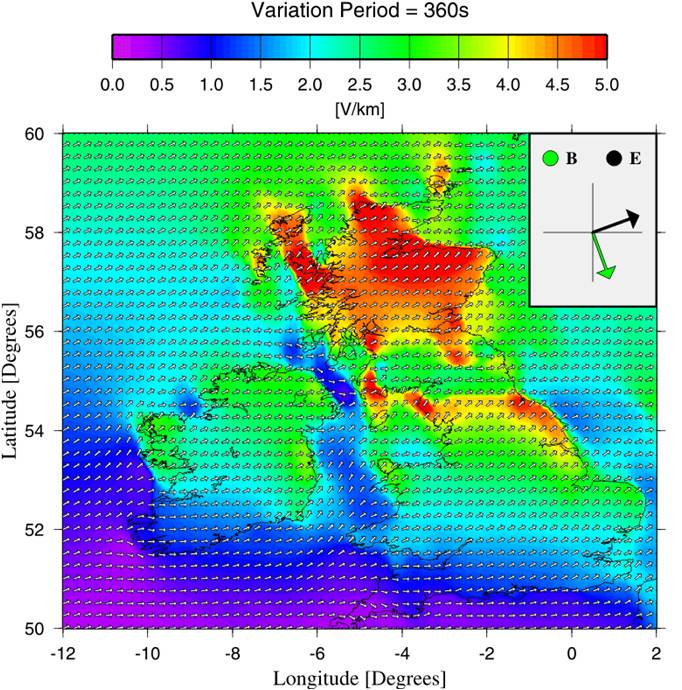Ground Effects of Space Weather
Incoming Space Weather - Why does it matter?
During times of heightened space weather, intense solar flares and associated plasma clouds are expelled from the Sun. Known as coronal mass ejections (CME), these magnetic clouds can sometimes head directly towards the Earth hitting the Earth's magnetosphere around 1-3 days later. This will result in a geomagnetic storm.
Charged particles in the magnetosphere then follow the magnetic field to the auroral oval where strong currents, known as electrojets, are created. This happens in the ionosphere, which stretches from a height of about 50 km to more than 1000 km above the Earth's surface.
Systems on or near Earth such as GPS and electricity networks are increasingly vulnerable to damage by intense space weather events and human activities are increasingly dependent on such systems.
What are GICs?
When the ionospheric currents change over time - as happens rapidly during geomagnetic storms - the associated magnetic variations will induce an electric field in the Earth. This in turn will cause currents to flow along any conducting path. These electrical currents are known as geomagnetically induced currents (GICs) which can surge along oil and gas pipelines and high-tension electricity transmission lines, via transformer groundings.
For pipelines this can upset the cathodic protection systems designed to maintain the pipelines in the long-term.
For power systems the transformers could get saturated causing increased transformer heating and other effects and in the worst case could cause blackouts.
A major power outage occurred in Québec in 1989 where 6 million people lost electrical power around 12 hours. The blackout was due to the loss of Static Var Compensators (SVC) and the loss of voltage control during a severe storm. The root cause was due to high level of voltage harmonics which incorrectly tripped seven SVC (more information here).
How can BGS help?
BGS operates magnetic observatories, three of which are located in the UK, where continuous highly accurate measurements of the Earth's magnetic field and it's variations are recorded every second. These data are available in real time for use as a proxy for GICs.
Scientific studies have also been carried out by various BGS scientists over the past decade to model GICs in power grids in the UK and investigate the likely risk based on past events.
BGS also provide forecasts of geomagnetic activity. Each day, a team of forecasters take it in turns to analyse the space weather data available and make predictions of geomagnetic activity levels likely on Earth.
Examples of the types of monitoring and forecasting services possible can be viewed here, although new bespoke services can always be developed depending on the requirement. See also our Geomagnetism data and services and example of other ground effects of space weather.
The phrase "predict and prepare", a quote from Jane Lubchenco, of NOAA in a recent Guardian article, should certainly be the way forward. Although successful prediction of geomagnetic storms is still a very difficult task, space weather forecasters around the world are getting more and more help from the increased quality of the space-based monitoring of the Sun's activity and solar wind transients.
The equally high quality ground based monitoring systems, such as magnetic observatories, provide real-time information on what is actually happening on the ground and can help optimise preparations. Combining this with modelling of the GIC response to geomagnetic activity, whether it be in power systems or pipelines, is critical if companies are to be fully prepared.
The space weather activities of the Geomagnetism team in BGS can help provide industry with the knowledge to "predict and prepare".




